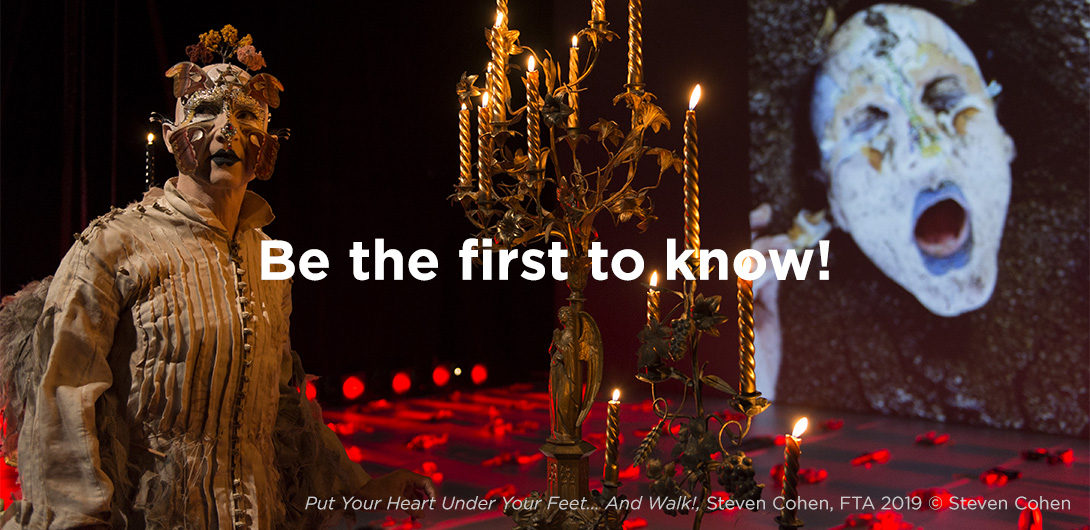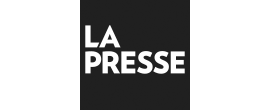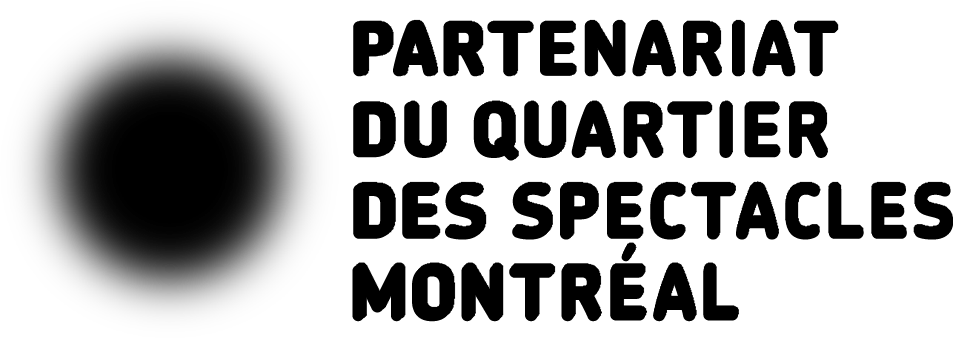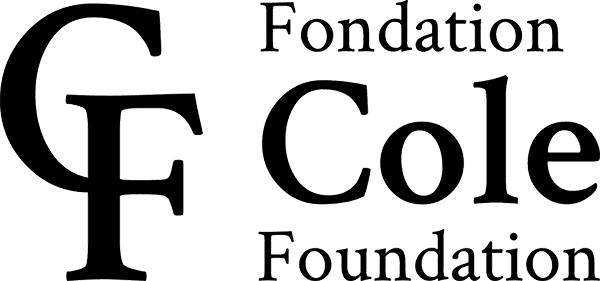How do you work in the studio? What connects you on stage?
Malik Nashad Sharpe: We do it together. We’re invested in it together, and we’re both interested in something that we let happen. Our connection is quite complex. It’s a kind of broad network, a fusion of different elements. I’m a fan of Ellen—her interests, her way of doing things, of becoming invested.
In the studio, we explore, we try things out, but we don’t necessarily attempt to do the same thing or be like each other. We don’t try to undo who we are as people and artists. I think that we let our differences take care of a whole bunch of things and we remain open to that. Difference feels valuable. We play with roles, with archetypes. We don’t write a play with characters. They emerge from our experiments. For example, we might start singing in an otherwise random experiment but what it ends up teaching us, is that it needs to be an opera Or, if we decide to draw something invisible, we become painters of another world. .
Ellen Furey: I was reflecting on what became possible when we worked as a pair. There’s something interesting in the contrast between our respective practices. It creates surprising results, ideas and paths that we might not have taken on our own. Working together forms a dynamic because it takes place at the intersection of our two worlds. It’s not about merging and becoming one, or following a single approach, or configuring our knowledge in a specific way. We try to maintain some independence. We imagine that we’re playing all the same characters. The relationship that develops is like a splitting of the same path, or journey, into two. I’m in my own world but at the same time accompanied by Malik, who is present as a witness to what I’m doing. We therefore share the experience of this creative ritual.
In SOFTLAMP.autonomies, you speak of a “resistance to normative categories.” You seem to be adopting a very open approach, in the sense of welcoming everything, almost saying “yes” to everything. Is this an objection or a value in your work?
M.N.S.: Yes, we say yes! It’s interesting to say yes to the unknown, it’s exciting to be in the position of not-knowing. Human beings always try to put things into boxes, to categorize things. But there are other ways of doing and being that are just as exciting and refreshing. Knowing is not always necessary for doing.
E.F.: The word that comes to my mind is “benevolent.” Having a benevolent view of the world and creating from that place, that viewpoint. I don’t feel the idea of resistance in our second project together. And as for “normative,” I don’t really know what that means anymore after the past two years. I’d say instead that we’re interested in a certain vivacity, a sense of mystery and development.
You seem to have a taste for the unseen. What interests you about the relationship to the world of the invisible and its representation?
M.N.S.: That’s a big question! For me, it’s not so much about making what we cannot see visible, because invisible things can also be realised. The only way things become visible is when you believe in their possibility. It’s the only way.
E.F.: I feel it’s more about how we can access the mystery that surrounds things, access the imagination without necessarily defining it clearly. Sometimes things are so real that they’re not visible! We share hints with the audience. They observe our way of trying to reveal what not everyone can see.
In the way you approach movement, you take pleasure in mastering it and also, in a certain sense, mocking it. Is this your sense of mischief at work?
M.N.S.: We definitely have a mischievous side! I don’t know if it’s because we did our first piece together the hard way, in the sense that it was difficult to perform and not particularly fun to dance… When we create a piece, there’s work, there’s pleasure, there’s play, and maybe this time we were mostly playing. We also let the material speak for itself and construct its own logic and determination.
E.F.: Yes, there’s definitely mischief, jokes, banter. Right now, we’re having fun with something that’s accessible… We don’t take ourselves too seriously, but we’re definitely very invested.
